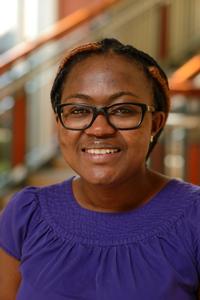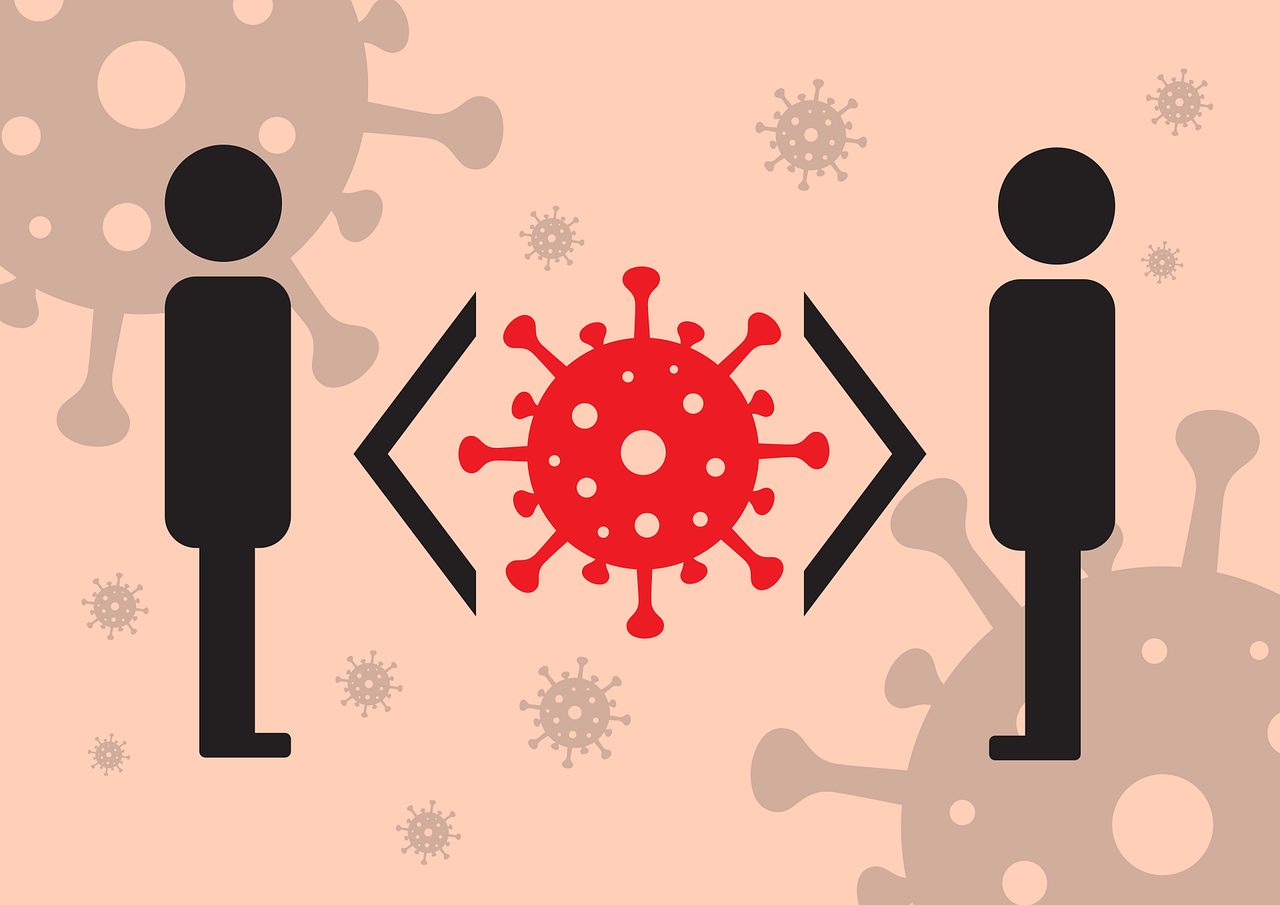By Manka Nkimbeng, PhD, MPH, RN & Tamar Rodney, PhD, RN, PMHNP-BC, CNE
Like other pandemics and crises COVID-19 will leave an indelible mark on the history of the United States. The physical, health, and economic impact of this disease will likely be greater than we can fully comprehend today. Yet, the most significant effects might be what is happening out of sight—in our minds. The mental health effects of this trauma might never be fully quantifiable. Unfortunately, the language currently used to describe the pandemic and strategies to prevent it can also exacerbate these mental health effects. The new buzz phrase that has emerged from this pandemic — “social distancing” is especially problematic for two reasons.
The intention and activity that social distancing calls for isn’t the problem, what is problematic is the terminology. The words “social” and “physical” connotates different meanings and tab into different mental schemas. The term “social” is related to a well-known mode of connection through virtual platforms—“social media”, which has very limited implications for physical contact. “Social distancing” requires us to psychically distance ourselves from each other. In stark contrast, we need to maintain our social connections to prevent the impact of isolation and the absence of physical human connection. Social gatherings and activities have been curtailed and limited to essential services only. Therefore, social media is actually one of the best ways to maintain and sustain social connections during this time when we are not able to come together in physical gatherings.
While the practice has been successful so far; through no fault of their own, many cannot afford to practice physical distancing. Many low-income and racial/ethnic minorities are employed in essential roles and it is impossible for them to work from home. Secondly, housing and living arrangements for some is very precarious making it challenging for these individuals to maintain physical distancing (e.g. individuals sharing the same common areas in large apartment buildings). Furthermore, people who are homeless, might not be able to physical distance themselves in shelters and make-shift tents. Although it is not their fault, the public health recommendation and desire to accomplish this goal versus the ability to actually maintain physical distancing presents emotional issues for many individuals.
While there has been some improvement, language surrounding the origins of COVID-19 has instigated some racial discrimination. The origin of COVID-19, has been debated and remains a racially charged point of blame. Casting blame and directing hateful words and actions towards minority groups, ironically represents a form of social distancing from others. This behavior is not representative of the virus control but rather it speaks to xenophobia and scapegoating in a time when we should all be involved in a unified effort to fight a disease that does not discriminate. Nurses and health care professionals have to be at the forefront of health equity fighting all injustices including racial discrimination.
Constant comparisons of COVID-19 to other crises in the media can perpetrate a cycle of re-traumatization. Guessing, convenient labeling increases errors, attaches negative connotations, creates stigma and reduces public trust. Phrases such as: “It’s like a flu”, “it’s going to be our Pearl Harbor moment”, “not as bad as Ebola”, repeatedly used, especially in the media minimize the historical experience of the horrors of those events. It can also invoke the cycle of reexperience of a traumatic event that can lead to emotional instability and re-experiencing of symptoms similarly seen in post-traumatic stress disorder. In reality, it is reasonable to expect that there will be multiple negative mental health consequences from this experience. For individuals with pre-existing mental health needs, this experience can trigger a relapse or worsen their current experiences. There is also a risk of the development of new disorders, for examples anxiety, depression, worsening the lives of those in social isolation.
Physically distancing ourselves from others has been successful. At the peak of the pandemic in March, 2020, 94% of the U.S. population or 42 states, cities and counties were under stay-at-home orders (Secon, 2020) that strongly encouraged physical distancing. Cell phone data from google maps showed a significant reduction in individual movements (Google, 2020). The threat and continued uncertainties remain, primarily because the virus is invisible. Despite its invisibility, human behavior is the only proven method that can prevent this virus from being invincible. The Center for Disease Control (CDC) suggests that “social distancing” can also be called “physical distancing”(Centers for Disease Control and Prevention (CDC), 2020). “Social distancing” evokes multiple meanings. This disease currently does not have a cure or vaccine and continuous to spread; therefore, prevention will continue to be the key to managing it. It is very important we begin referring to this strategy as physical distancing to eliminate any confusion with social media and social connections that are critically necessary now.
In addition to calling it physical distancing, we have to approach treatment and management of COVID-19 with an open mind alongside a comprehensive approach that accounts for mental health. It is critical to let COVID-19 be COVID-19. The true impact will be a historical definition and it is imperative that we allow time to reveal that. The ever-changing rates of infection and death represents a continuous and repeated cycle of traumatic events. Whether we accept it now or later, the scars of this trauma will remain. The direct trauma of the disease and death, related traumatic events such as job loss, inability to visit friends, family and travel will impact mental health. We need to refer and treat the mental health issues arising from the COVID-19 trauma, and also work to realign mental health services for virtual practice during this time of physical distancing.
Finally, we have to avoid language that can trigger past trauma and use clear terminology. Comparisons to other traumatic events and use of triggering terminology such as “Great depression”, and “9/11” can dig into negative schemas and retraumatize members of the community. Improperly and frequently referring to the act of separating ourselves physically from others as social distancing and using other trauma laden terminology around the COVID-19 discussion can exacerbate the current and long-term negative mental health effects of this disease. We have to use appropriate language to avoid exacerbating the mental health issues arising from the COVID-19 pandemic.
Learn more:
- The CDC on Social Distancing
- Google COVID-19 Community Mobility Report
- An interactive map of the US cities and states still under lockdown
Read more:
- We Need Nurses to Take on the Mental Health Crisis
- We Need Policy Action to Address Financial Strain During the COVID-19 Crisis
- Addressing Social Determinants of Health: A Nursing Imperative to Achieve Health Equity During the COVID-19 Pandemic and Beyond
- Being a Good Neighbor During COVID-19
ABOUT THE AUTHORS

Manka Nkimbeng, PhD, MPH, RN worked as a community health nurse in Lowell Massachusetts and then as a research nurse on the Community Aging in Place: Advancing Better Living for Elders (CAPABLE) study in Baltimore city. She earned her PhD at Johns Hopkins School of Nursing in 2019 and is now a Robert L. Kane Postdoctoral Fellow at Univeristy of Minnesota School of Public Health.

Tamar Rodney, PhD, RN, PMHNP-BC, CNE is a board-certified Family Psychiatric Mental Health Nurse Practitioner and has practiced as a nurse in numerous patient settings and multiple countries. Her research focuses on biomarkers for PTSD in military personnel and Veterans who have had brain injuries. Tamar has had extensive laboratory training at the National Institutes of Nursing Research (NINR) tissue injury branch, where she has analyzed different proteins related to brain injuries. Her clinical practice serves families with substance use needs in the Baltimore City community.
